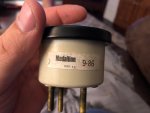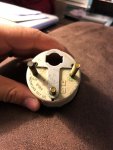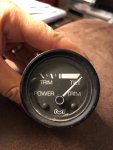hoowahfun
Petty Officer 2nd Class
- Joined
- Sep 1, 2016
- Messages
- 186
hi everyone. I installed a new trim sending unit and limit switch this weekend with new wiring through the transom housing and hooked everything up. I turned the key to the “On” position, and the trim gauge just stays pegged all the way up. It stays that way whether key is on or off with no movement. It was like this before I swapped sensors, but the sensors were also bad because the contacts were corroded away inside when I took them apart.
I know a lot of people say they just leave them broken and operate by feel, but I’m not sure I’ve got the experience necessary for that so would rather have the gauge working for reference.
How would I go about troubleshooting to determine if it’s a bad gauge or bad wire somewhere between the gauge and the new wires from the sensors? All I have is a cheap digital multimeter. Thanks!
Edits: spelling wrror
I know a lot of people say they just leave them broken and operate by feel, but I’m not sure I’ve got the experience necessary for that so would rather have the gauge working for reference.
How would I go about troubleshooting to determine if it’s a bad gauge or bad wire somewhere between the gauge and the new wires from the sensors? All I have is a cheap digital multimeter. Thanks!
Edits: spelling wrror
Last edited:






















